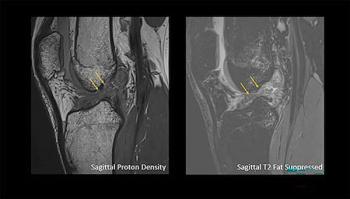
MRI Reveals At-Risk Genetics Can Affect Cognitive Performance
Differences in cortical thickness development correlates to cognitive differences and could be involved in increased risk for mental illness.
There is a correlation between the brain differences seen in children with at-risk genetics and their differences in cognitive performance, according to MRI imaging.
As part of this year’s Radiological Society of North America (RSNA) annual meeting, investigators from the University of California at San Francisco shared these results from the first study to examine the role of cortical development as a mediator between catechol-O-methyltransferase (COMT) genotype and cognitive performance. The team also examined the possibility that it could be a mediator for schizophrenia and psychosis onset.
“MRI in children with abnormal COMT genetics offers insight into neuroanatomical differences that manifest before clinical symptoms and might represent a window of intervention,” said lead study author, presenter, and UCSF radiology resident Justin M. Remer, M.D.
COMT is an enzyme that plays a critical role in frontal and temporal lobe dopamine metabolism. Existing research has shown that if an individual has the rs4680 Valine 108/158: Methionine polymorphism, he or she is at increased risk for schizophrenia. This variant can be identified via convergent functional genomics.
According to the team’s results, differences in cortical thickness development can be used to explain the differences in longitudinal cognitive development seen in children who have the COMT genotype. They reached this conclusion by examining T1 MRI brain images from 88 children between ages 1 years to 6 years.
Not only did Remer’s team group the children by COMT rs4680 genotype, but they also collected the children’s learning composite scores – a surrogate for IQ measurement. Using imaging, the team pinpointed areas of the brain that revealed developmental differences in children with the genetic make-up that put them at high risk for psychiatric disease.
Ultimately, using these findings, the team was able to connect the brain differences to variance in cognitive performance.
For additional RSNA Coverage, click
Newsletter
Stay at the forefront of radiology with the Diagnostic Imaging newsletter, delivering the latest news, clinical insights, and imaging advancements for today’s radiologists.




























